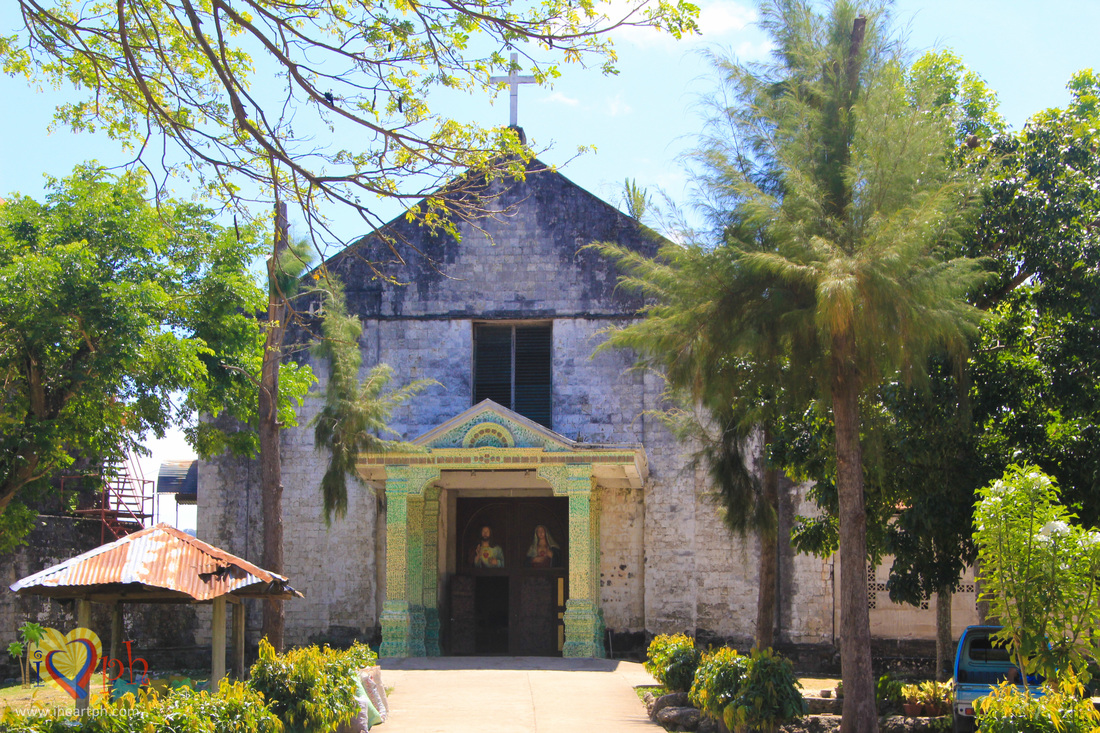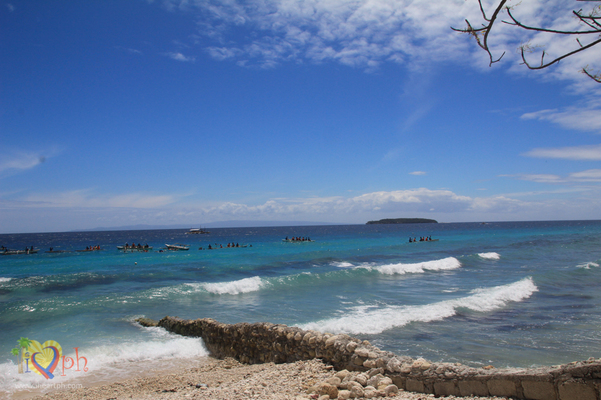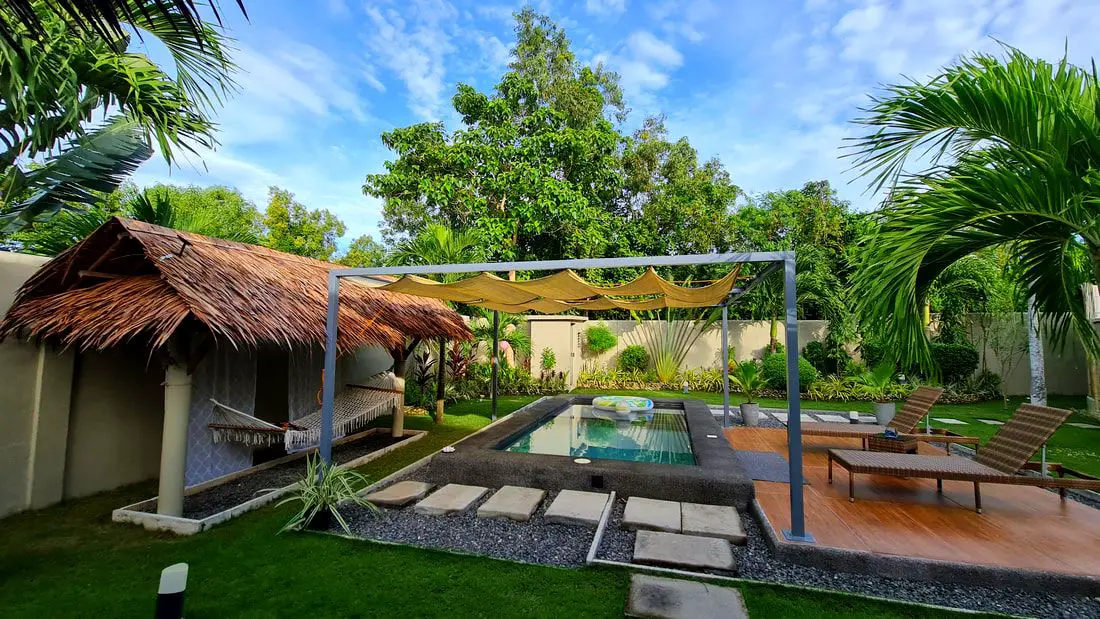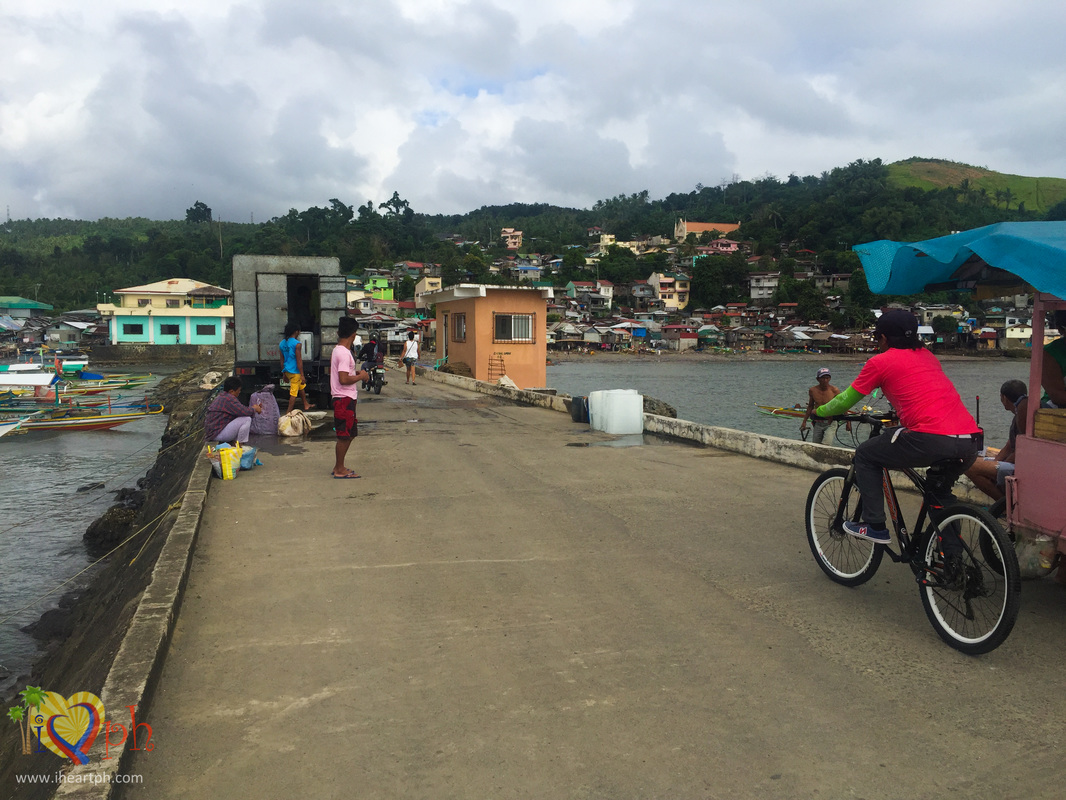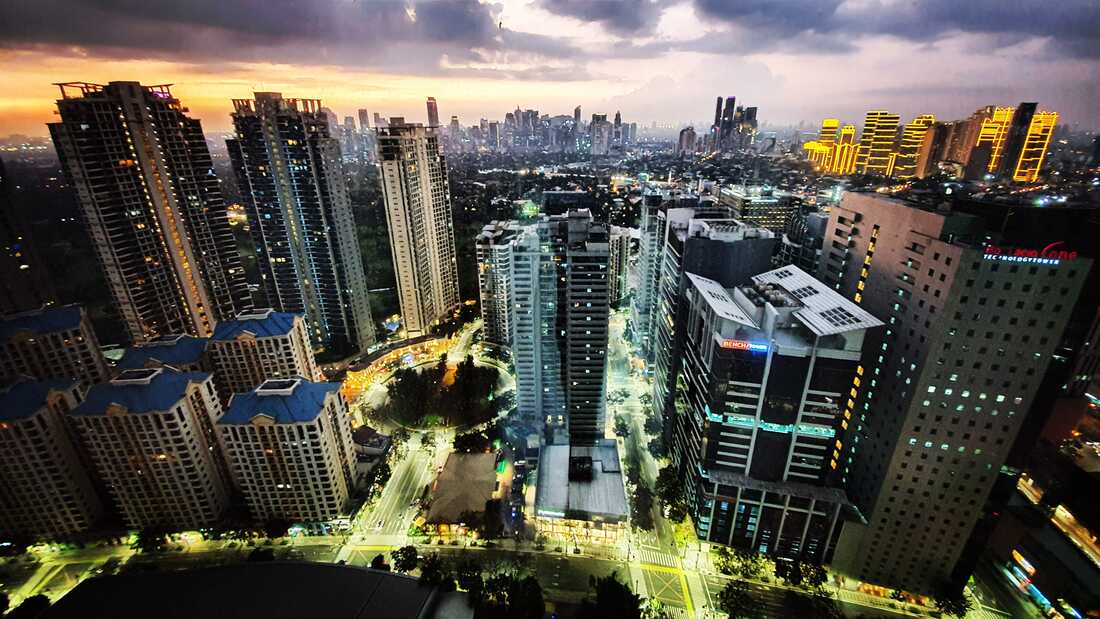During our tour around Siquijor, we headed for Santa Maria Church in the town of Maria after our trip to Salagdoong Beach. The church is famous for its miraculous St. Rita of Cascia or more popularly known as Santa Rita de Siquijor to Siquijodnons.
If you are coming from Dumaguete City, you can book your day trip here: Siquijor Heritage Day Trip
Patron Saint
Santa Rita de Siquijor, patron saint of Santa Maria Church, is known to be the patron of hardships, especially of women: battered wives, widows, hopeless cases, difficult marriages, domestic problems, and sickness.
Her depiction within the church is distinct. She has a sad face, and downturned lips, and clad in a black robe, she holds a crucifix in one hand and a skull in the other, earning her the nickname Black Maria among locals.
Who is Santa Rita de Casia?
Born in 1381 in Italy, she endured a tumultuous life. Married at a young age to an abusive husband, she tried to instill Christian values in him. Tragedy struck when he was killed in a family feud, leaving her widowed with two sons also lost within the year. Despite her hardships, she emerged as a symbol of hope for those facing impossible odds.
Canonized as a saint in the Roman Catholic Church, her feast day is celebrated on May 22nd each year. Revered as the patroness of those in dire situations, her legacy persists through the ages. Additionally, she is humorously regarded as the unofficial patroness of baseball.
Her husband died after 18 years of marriage, which was followed suit by her 2 children within the same year. She became a nun afterwards and miraculously manifested Christ’s wound on her forehead.
Why is Santa Rita called the Black Maria?
Santa Rita de Siquijor is referred to as the Black Maria due to the unique and somber depiction of her statue. The statue is garbed in a black garment, which is unusual for a religious icon, and this distinctive feature has led to its local nickname. The black robe, combined with the statue’s melancholic expression and the items it holds—a skull in one hand and a crucifix in the other—contribute to its eerie and mysterious aura.
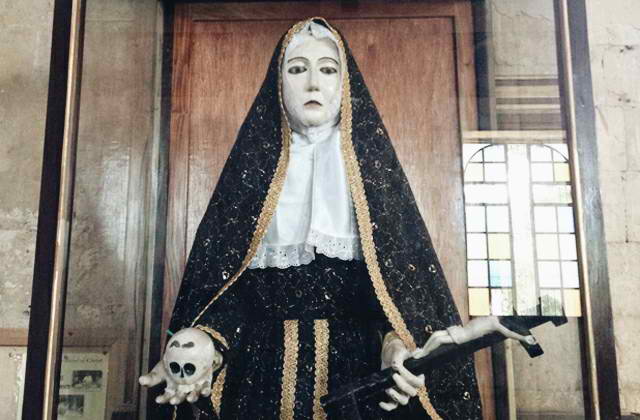
The name “Black Maria” may also be influenced by the island’s reputation for mysticism and the supernatural. Siquijor is known for its folk healers and stories of enchantment, which could add to the mystical perception of the statue.
Legend has it that the effigy of Santa Rita leaves the church to roam the island after sundown and returns before sunrise. Some claim to have found mud and grass on her dress, adding weight to the belief that there may be truth to these tales.
History and Construction
Santa Maria Church, also known as the Church of Our Lady of the Assumption, is a significant historical and religious site in Siquijor, Philippines.
The church’s history dates back to the Spanish colonial era when Catholicism was introduced to the island. Constructed by Spanish missionaries in the late 19th century, the church stands as a testament to the island’s rich cultural heritage and the spread of Christianity in the region.
If you are coming from Dumaguete City, you can book your day trip here: Siquijor Heritage Day Trip
The construction of Santa Maria Church was part of the Spanish effort to convert the local population to Christianity. The church was built using coral stones, which were abundant in the area, and wood from local trees. The labor was provided by the local community under the guidance of Spanish friars, which was a common practice during that period.
Annual Feast and Cultural Significance
The annual feast of Santa Maria Church in Siquijor and its patron saint, Santa Rita de Cascia, is celebrated on May 22nd. This date is significant as it marks the feast day of Saint Rita, who is venerated as the patroness of impossible causes, difficult marriages, infertility, parenthood, and those who have been widowed or are suffering from heartbreak.
The feast day is an occasion for special masses, processions, and community gatherings, honoring the life and miracles of Saint Rita, reflecting on her story of perseverance, faith, and forgiveness.
Lubi Festival, is also celebrated on May 20-21 in Maria, Siquijor. This vibrant event is a significant part of the local culture, featuring a mass in the town church followed by various traditions that include street parades, dances, and performances. The festival is characterized by a flourish of colors, cheerful music, and is essentially a massive party where everyone is invited to join in the celebrations.
During this time, it’s common for people to open their homes and offer buffets of food, making it an ideal time for Filipino family reunions. The Lubi Festival is a great opportunity to experience the local culture and participate in the festivities, whether by watching the parades and performances or dancing at the town square.
Architecture
The architecture of Santa Maria Church is a blend of indigenous and Spanish colonial styles. The coral stone walls give the church a distinct look, reflecting the island’s natural resources and the architectural techniques of the time. The church’s façade is simple yet elegant, with a belfry that houses antique bells, adding to its historical charm.
Resembling other colonial era Catholic churches in the country, Santa Maria Church has a massive door embellished with the figures of Jesus and Mary, and the ten commandments.

If you are coming from Dumaguete City, you can book your day trip here: Siquijor Heritage Day Trip
Inside, the church features religious icons and artifacts that have been preserved over the years. The altar is a focal point, often adorned with flowers and candles, creating a serene atmosphere for worship and reflection.
But you will notice that the interior of the church is very simple — no grandiose pulpits, no intricate carvings, no colorful stained glasses. But what it lacks in interior decorations, it makes up for in its magnificent retablo.
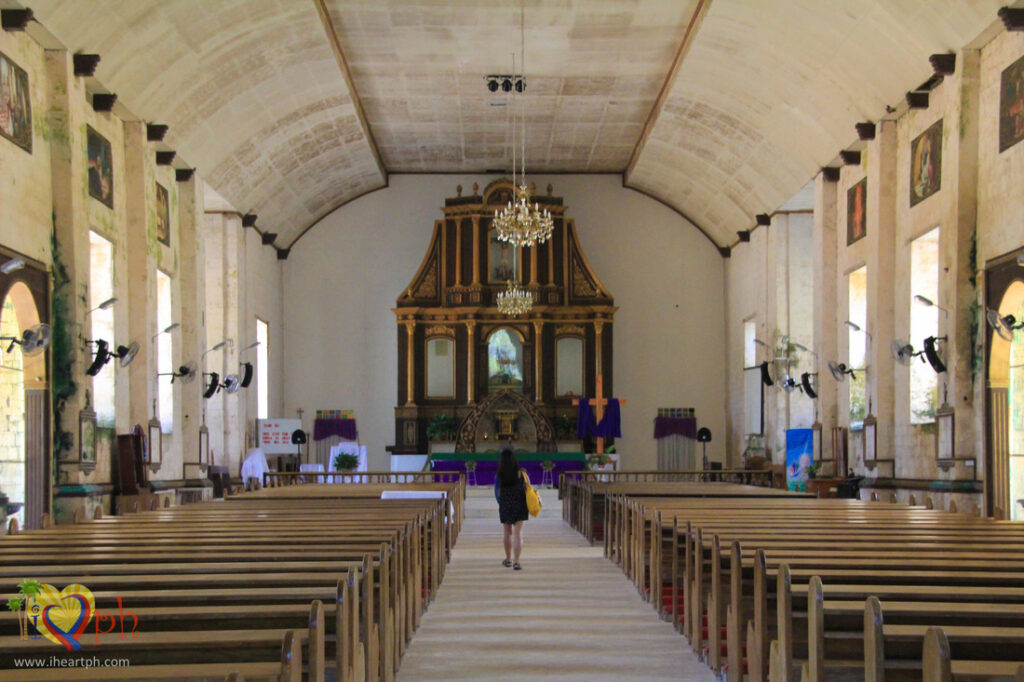
How to Go to Santa Maria Church?
Maria is located at the south eastern side of Siquijor. There are several multicabs and jeepneys traversing the national highway coming from San Juan. Ask the driver to drop you off in Maria and the church should be at a walking distance within the town proper.
If you are on a generous budget, I suggest to hire a tricycle or habal-habal who can take you directly habal-habal tour guide. Their rate is around P1,000 for the entire Siquijor island which will take almost the entire day.
Mass Schedule
Santa Maria Church holds regular mass services for the local community and visitors. The schedule typically includes daily masses and special services on Sundays and holy days of obligation. For the most current mass times, it is advisable to contact the church directly or visit their official website or social media pages, as schedules may vary throughout the year.
If you are coming from Dumaguete City, you can book your day trip here: Siquijor Heritage Day Trip
Opening Hours
The church is generally open to the public during the day, allowing visitors to explore its interior and grounds. Opening hours may be subject to change, especially during special events or religious observances, so it’s recommended to check in advance if you’re planning a visit.
FAQs
What is the best time to visit Santa Maria Church in Siquijor?
The best time to visit is during the annual feast in May 20-22 for a more festive experience, or during regular visiting hours for a quieter visit.
Is there an entrance fee to visit the church?
Typically, there is no entrance fee to visit Santa Maria Church, but donations are welcome for the maintenance of the church.
Can non-Catholics visit Santa Maria Church?
Yes, visitors of all faiths are welcome to visit the church and appreciate its historical and architectural significance.
Are there any dress code requirements for entering the church?
While there is no strict dress code, it is recommended to dress modestly out of respect for the religious site.

